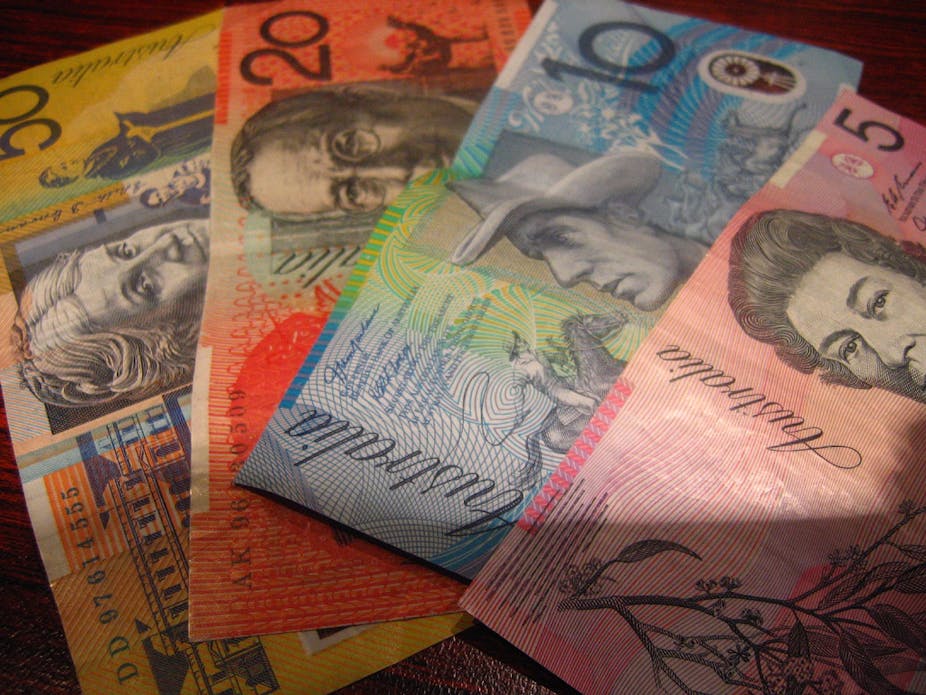Central banks everywhere - from Russia to the Czech Republic - are piling into Australian-dollar-denominated assets. This has limited the fall of the Australian dollar to around 3% from its peak even though commodity prices, which are strongly correlated with the Aussie dollar, have fallen globally by 10%. Even the German Bundesbank, the stodgiest of central banks, announced its intention to increase its reserve allocation of Aussie dollar assets. Is the Australian dollar, the fifth-most traded and among the most volatile of currencies, about to rival the US dollar, the yen, and the Swiss franc as one of the world’s major reserve currencies? And does this increased demand for assets created down under change the way the Reserve Bank and the Treasury conduct policy?
As the Euro crisis unfolds in slow motion and confidence in the currency dwindles, investors everywhere are looking for safer and higher yielding alternatives. Central banks, whose balance sheets have dramatically expanded since the GFC, are no different. Euro-denominated 10-year German Bunds, for example, bear a record-low interest of less than 1.6% while the risk of a large depreciation, should the Euro zone break up or inflation gain pace, is palpable. Compare this to the current yield of 10-year Australian bonds, which is twice the German rate, add to this projected GDP growth in 2012 of 4.25% (according to the RBA), and the decision to shift out of Euros and into Australian dollars looks like a no-brainer.
Economic crises make investors look for safe havens. Small interest rate differentials can easily be wiped out by the loss in value of a collapsing currency. Large risk-averse investors, in particular pension and mutual funds as well as central banks, seek to reduce their exposure to assets denominated in a currency that carries the risk of a significant depreciation. Such flight to capital was clearly visible during the 1997/8 Asian financial crisis, and the Russian and Argentine crises shortly after. Perversely, during the 2007/8 GFC, which financial markets assumed would bring down the global economy, the safe haven effect led to an appreciation of the US dollar even though the crisis originated in the US subprime mortgage sector. Now it is the Euro crisis that is fuelling global investors’ fears of a worldwide economic Armageddon, making the Euro look distinctly less attractive as a reserve currency.
The Aussie dollar has traditionally not been one of the major reserve currencies. While it was revered for its high liquidity, it was also considered risky. It was one of the target currencies for the global carry trade as well as short-term speculation. The recent announcements by central banks to increase their Aussie dollar holdings are an expression of trust in the health of the Australian economy, confirmed by Australia’s AAA credit rating.
More importantly, investments in Aussie dollars (as with other commodity currencies) are seen as a reasonably safe way of participating in the fortunes of Asia’s booming economies, foremost China’s, without investing in the booming countries directly as their currencies are usually managed and illiquid. Given that the global economy currently relies on Asia, the BRICS and oil-exporting countries, increasing the exposure to these countries makes economic sense.
But are Aussie dollar investments really that safe? To the extent that the Aussie dollar is closely linked to commodity prices, which may fluctuate wildly, its value is also subject to large gyrations. The Australian economy is still riding high on the back of a lengthy commodity boom of historic proportions. A close look at historic prices suggests that this boom will not endure and once commodity prices retreat, so will the Aussie dollar.
There are first signs this may be happening, with Brent crude oil prices having retreated by 25% and copper by 15% from their respective peaks. The prices of Australia’s primary exports, namely coal and iron ore, have held up better but as additional supply comes online and China’s demand flags, today’s high prices will be remembered fondly. Asia’s (and particularly China’s) future economic performance is as hard to predict as the weather in Melbourne, so going long in assets tied to the region’s fortunes may well pay off. But the downside risk is considerable. It is therefore likely that central banks’ purchases of Aussie-dollar-denominated assets will remain modest; our currency is not about to displace the yen or euro as a reserve currency.
Consequently, the impact on Australian monetary and fiscal policy will be minimal. In theory, additional demand for Australian dollar denominated assets leads to an appreciation of the currency. This dampens inflationary pressures, providing room to lower interest rates. On the other hand, capital inflows may spur on the economy further, putting upward pressure on interest rates to stabilise output. The net effect is uncertain. Since the increase in demand for Australian dollar assets is likely to be small and short-lived, neither the Treasury, nor the RBA will lose any sleep over these latest developments in the foreign exchange market. Anyone thinking this marks a new chapter in Australia’s rise as an economic power is suffering from megalomania.

